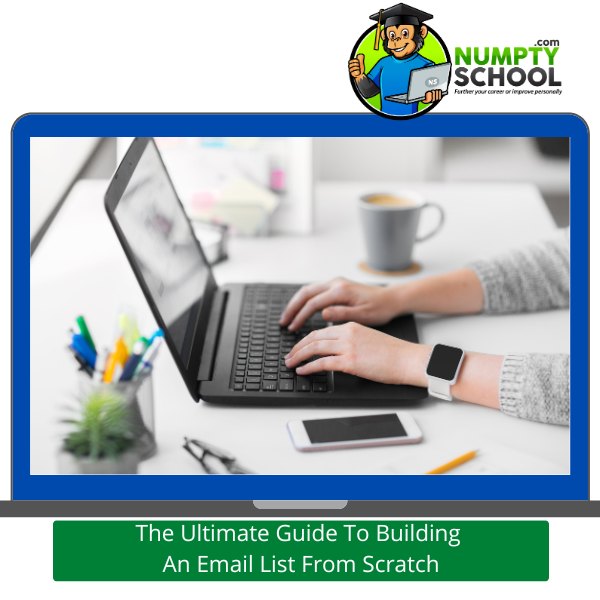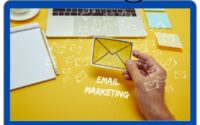The Ultimate Guide To Building An Email List From Scratch

Introduction
Building an email list from scratch can feel like a daunting task, but it’s one of the most effective ways to grow your business. In this ultimate guide, we’ll take you through every step of the process, from understanding why an email list is crucial to engaging your subscribers and measuring your success.
Why Building an Email List is Crucial
Building an email list is essential for any business aiming to create a direct line of communication with its audience. It allows you to nurture relationships, provide value, and ultimately convert subscribers into loyal customers.
Benefits of an Email List
An email list offers numerous benefits, such as:
- Direct Communication: Reach your audience directly in their inbox.
- High ROI: Email marketing has a higher return on investment compared to other marketing channels.
- Personalization: Tailor your messages to individual subscriber preferences.
- Ownership: Unlike social media followers, you own your email list.
Common Misconceptions
Many believe that email marketing is outdated or ineffective. However, with the right strategies, it remains one of the most powerful marketing tools available. Another misconception is that building an email list requires significant technical expertise or resources, which is not true with the plethora of user-friendly tools available today.
Setting Up Your Email Marketing Platform
Before you start collecting emails, you’ll need to choose and set up an email marketing platform.
Choosing the Right Platform
There are many email marketing platforms available, such as Mailchimp, ConvertKit, and AWeber. When choosing a platform, consider factors like ease of use, automation features, integrations, and pricing.
Integrating with Your Website
Once you’ve chosen a platform, integrate it with your website. This typically involves embedding signup forms or pop-ups that capture visitor information. Most platforms offer easy-to-follow instructions and plugins for popular website builders like WordPress and Shopify.
Creating Compelling Lead Magnets
A lead magnet is an incentive offered to potential subscribers in exchange for their email address. The more valuable your lead magnet, the more likely people are to sign up.
Understanding Your Audience
To create an effective lead magnet, you need to understand your audience’s needs and pain points. Conduct surveys, engage in social media conversations, and analyze your existing customer data to gather insights.
Types of Lead Magnets
Lead magnets come in various forms, such as:
- E-books: In-depth guides on a specific topic.
- Checklists: Easy-to-digest, actionable steps.
- Templates: Pre-made documents or tools that save time.
- Webinars: Live or recorded sessions on relevant topics.
- Discounts: Special offers or coupons.
Designing Effective Lead Magnets
Your lead magnet should be visually appealing and professionally designed. Use tools like Canva or Adobe Spark to create attractive visuals. Ensure the content is high-quality and provides real value to your audience.
Optimizing Your Signup Forms
Signup forms are the gateways to your email list. Optimizing these forms is crucial for maximizing conversions.
Placement Strategies
Strategically place your signup forms where they are most likely to capture attention. Common placements include:
- Homepage: Above the fold or as a pop-up.
- Blog Posts: Within the content or at the end of posts.
- Sidebar: On all pages of your site.
- Exit Intent Pop-ups: Appearing when a visitor is about to leave the site.
Form Design Best Practices
Ensure your forms are simple and easy to complete. Use clear and compelling calls-to-action (CTAs), and avoid asking for too much information upfront. A name and email address are usually sufficient.
A/B Testing Forms
Regularly A/B test your signup forms to see which versions perform best. Test different headlines, form fields, CTA buttons, and placements to optimize your conversion rates.
Driving Traffic to Your Signup Forms
To grow your email list, you need to drive traffic to your signup forms.
Content Marketing
Create high-quality, valuable content that attracts your target audience. Blog posts, videos, podcasts, and infographics can all drive traffic to your website and signup forms. Ensure your content is SEO-optimized to increase organic traffic.
Social Media Strategies
Leverage your social media platforms to promote your lead magnets and signup forms. Share snippets of your content, run contests or giveaways, and use social media ads to reach a broader audience.
Paid Advertising
Invest in paid advertising to drive targeted traffic to your signup forms. Platforms like Google Ads, Facebook Ads, and Instagram Ads allow you to target specific demographics, ensuring your ads reach potential subscribers.
Engaging Your Email Subscribers
Once people have signed up, it’s crucial to keep them engaged with your content.
Welcome Emails
Send a series of welcome emails to introduce new subscribers to your brand. This is your chance to set expectations, provide value, and build a relationship from the start.
Regular Newsletters
Maintain regular communication with your subscribers through newsletters. Share updates, exclusive content, and offers to keep your audience engaged and interested.
Segmentation and Personalization
Segment your email list based on subscriber interests, behaviors, or demographics. Use personalization techniques to tailor your messages to each segment, making your emails more relevant and engaging.
Measuring and Analyzing Your Results
To continually improve your email marketing efforts, you need to measure and analyze your results.
Key Metrics to Track
Track key metrics such as:
- Open Rates: Percentage of subscribers who open your emails.
- Click-Through Rates (CTR): Percentage of subscribers who click on links within your emails.
- Conversion Rates: Percentage of subscribers who take a desired action.
- Bounce Rates: Percentage of emails that fail to deliver.
- Unsubscribe Rates: Percentage of subscribers who opt out.
Tools for Analysis
Use tools like Google Analytics, your email marketing platform’s built-in analytics, and third-party tools like HubSpot to analyze your performance. These tools can provide insights into what’s working and what needs improvement.
Avoiding Common Pitfalls
Avoiding common pitfalls will help you maintain a healthy email list and achieve better results.
Compliance with Regulations
Ensure you comply with regulations like GDPR, CAN-SPAM, and CASL. Obtain explicit consent from subscribers, provide clear opt-out options, and include your physical address in all emails.
Avoiding Spam Traps
Avoid using purchased email lists and ensure your content is not spammy. Use double opt-in methods to confirm subscribers’ email addresses.
Keeping Your List Clean
Regularly clean your email list by removing inactive subscribers. This will improve your deliverability rates and ensure your emails reach engaged readers.
Conclusion
Building an email list from scratch takes time and effort, but it’s one of the most valuable assets you can create for your business. By following the steps outlined in this guide, you can grow a high-quality email list that drives engagement, loyalty, and sales.
FAQs
How often should I send emails to my subscribers?
It’s best to find a balance that keeps your audience engaged without overwhelming them. Start with a weekly or bi-weekly schedule and adjust based on engagement rates.
What is a good open rate for email campaigns?
A good open rate varies by industry, but generally, a rate between 15% and 25% is considered strong.
How can I reduce my email bounce rate?
To reduce bounce rates, ensure your email list is clean by regularly removing inactive or invalid addresses and using double opt-in methods to confirm new subscribers.
Can I use purchased email lists to grow my email list?
No, using purchased email lists can lead to high bounce rates, spam complaints, and legal issues. It’s best to build your list organically.
What are some effective ways to re-engage inactive subscribers?
Send re-engagement campaigns with special offers, surveys, or asking for feedback. If they remain inactive, consider removing them from your list to maintain its health.
Meta Description
Discover how to build an email list from scratch with this ultimate guide. Learn strategies for creating lead magnets, optimizing signup forms, and engaging subscribers.



